NHTSA Issues Initial Crash Report for Driver Assist Tech

In 2021, the National Highway Traffic Safety Administration (NHTSA) asked manufacturers to begin reporting vehicle accidents where Advanced Driver Assistance Systems (ADAS) and/or semi-autonomous driving aids were engaged. The agency was specifically interested in incidents where such systems were active at least 30 seconds prior to the crash, hoping it might shed some light as to the technologies at play while the industry continues to make it standard equipment.
The resulting data hasn’t exactly made modern safety systems look all that effective, especially considering they were long touted by automakers, safety regulators, and politicians as a pathway toward totally eliminating roadway fatalities. Meanwhile, quadrants of the automotive industry have taken to the media to collectively bemoan that the study needs more context before any real conclusions about the tech should be made. That’s true of any study. However part of that context involves the efficacy of those research efforts and what the parties involved ultimately want you to believe.
Based on the information provided by the NHTSA, it cataloged 392 separate incidents between July 1st of last year through May 15th, 2022. This already throws up a few red flags, starting with the limited sample size. The study was launched as part of a general standing order that obligated companies to share crash information and also gave the NHTSA supreme authority to acquire the relevant data. While preliminary, the intention was to take a broad snapshot of where the relevant technologies had left us in terms of safety.
But that’s going to be hard to do with just 367 reports coming back for analysis and genuinely surprising considering that number accounts for vehicles equipped with SAE Level 2. Advanced Driver Assistance Systems of this type are fairly commonplace on today’s market and include features like lane-keeping with assist, automatic emergency braking, crash avoidance tech, and adaptive cruise control (provided at least two of those systems work collaboratively).
Sadly, the NHTSA summary shows that a sizable portion of the data came via 139 consumer complaints. The largest data pool came from manufacturers’ telematic data, accounting for 258 incidents, with the remaining information coming by way of a handful of reports from law enforcement, field analysis, or the media. The agency noted that this made things tricky when it came down to analysis, as some automakers may not use systems that were engaged 30 seconds prior to a crash or lack the kind of information gathering on Level 2 ADAS engagement and telemetry.
This appears to have done a real number on Tesla, which accounted for 273 SAE Level 2 crashes tabulated by the NHTSA — six of which were reportedly fatal. Honda came in second, with 90 incidents reported, while Subaru’s 10 crashes left it in third place. No other manufacturer managed to break double digits, leaving the summary showing Tesla as representing the overwhelming majority of ADAS-related wrecks. Could the American EV manufacturer really be that far behind the curve or are there other factors influencing the data?
Some reporting has suggested AutoPilot shuts off one second before impact – Ed.
The above could simply be down to Tesla offering an inferior product. While I do believe Tesla’s Autopilot is among the easiest systems to use, it’s difficult for me to believe it’s substantially safer than the competition after the business abandoned lidar and other sensing equipment. However, there is something about Tesla representing the overwhelming majority of reported crashes that just doesn’t feel right. Growth notwithstanding, the automaker still only managed to sell 301,900 automobiles last year — whereas brands like Chevrolet, Ford, Toyota, and Honda all easily surpassed 1 million.
This presumably means Tesla has been selling overpriced trash or it’s being massively overrepresented in the NHTSA study. While arguments can be made for both, the latter seems the larger issue considering how the brand does its data collection. Then there’s the proverbial elephant in the room most people don’t much like discussing.
Government agencies have long been weaponized for political purposes and I’ve begun to fear this now applies to the NHTSA to some degree. It’s no secret that Tesla has been butting heads with the Biden administration’s energy plan. Elon Musk has repeatedly criticized the president’s desire to continue subsidizing electric vehicles on the grounds that government involvement is making the market uncompetitive. The CEO has likewise opposed linking any new incentives to union labor. As a result, we’ve previously seen Tesla be disinvited from White House events pertaining to the United States’ electrification efforts and increased regulatory pressure directed its way since Biden took office. But the brand is also viewed as an upstart within the industry, one whose very existence has been forcing legacy manufacturers to play its game as Musk hoovers up market share and pokes holes into claims that EVs will automatically be better for the environment.
Long story short, there are plenty of people that would rather Tesla not exist and the company’s previous actions (some of which were genuinely egregious) have cheesed off regulators to a point that they might be inclined to intervene. The U.S. Department of Transportation (DOT) already has a probe looking into the Autopilot and has yet to do the same for the systems being used by its rivals. My guess is that the unfavorable reporting was probably the result of how its own telematics played into the study and its status within the industry ensuring that nobody else minded. But that’s still incredibly speculative and the NHTSA did at least attempt to frame the study as preliminary and in need of some additional context.
From the NHTSA:
This new data is the first of its kind, and the reports detail several important caveats and limitations to this dataset for researchers, the press and the public to consider. For a clear understanding of the data, users should read about the data limitations and the sources that manufacturers and operators used to collect and report crashes.
For example, some reporting entities provide the agency with robust data more quickly because their vehicles are equipped with telematics capabilities. Telematics is the most frequently cited source for data collected currently by the Standing General Order. Manufacturers and operators also rely on consumer complaints to begin collecting data, which are the second-largest source for [SAE Level 2] ADAS, and field reports, the second-largest source for ADS. Further, these data are not normalized by the number of vehicles a manufacturer or developer has deployed or by vehicle miles traveled. That information is held by manufacturers and not currently reported to NHTSA. Thus, these data cannot be used to compare the safety of manufacturers against one another.
Some initial observations from the data show that since reporting requirements began, one crash reported for [a Level 3-5] ADS-equipped vehicle resulted in serious injuries, and 108 of the crashes resulted in no injuries. Of the 130 reported crashes for ADS-equipped vehicles, 108 involved collisions with another vehicle, and 11 involved a vulnerable road user, such as a pedestrian or cyclist.
“The data released today are part of our commitment to transparency, accountability and public safety,” said Dr. Steven Cliff, NHTSA’s Administrator. “New vehicle technologies have the potential to help prevent crashes, reduce crash severity and save lives, and the Department is interested in fostering technologies that are proven to do so; collecting this data is an important step in that effort. As we gather more data, NHTSA will be able to better identify any emerging risks or trends and learn more about how these technologies are performing in the real world.”
Honda, which also took it on the chin, suggested that the resulting data makes it hard for any real comparisons to be made. Speaking with Automotive News, Chris Martin, a spokesman for American Honda, urged caution when going over the crash data reported to NHTSA, “as apple-to-apple comparisons simply may not be possible at this time.”
“[The data is] based on unverified customer statements regarding the status of ADAS systems at the time of a reported crash. Since Honda relies on unverified customer claims to comply with NHTSA’s 24-hour reporting deadline, it is likely that some reported incidents would not have met NHTSA’s reporting criteria given more definitive data and time,” he added.
He has a point. Even the NHTSA said that some of the tabulated crashes could be repeats, noting that the included incident reports may also be incomplete or unverified. That’s a pretty low bar for a government study that’s assumed to lead to tangible regulatory actions. Meanwhile, we’ve had a few years of independent studies suggesting that at least a portion of advanced driving aids don’t function as claimed. Some have even gone so far as to suggest that the very nature of ADAS (and more elaborate driving assistance suites) effectively encourages motorists to become complacent to a degree that may make them less safe behind the wheel.
The NHTSA study is split into two relatively short summaries pertaining to crashes involving SAE Level 2 and the more advanced Level 3-5 that you’re welcome to read yourself. But neither paper seems to offer much in the way of hard data beyond the frequency in which certain brands were involved and what type of object ended up being struck by the cars in question — and even that’s been undermined by the agency’s own admission that there are severe limitations in how things were reported.
While this would have been forgivable in 2015, when the technology was just starting to manifest on passenger vehicles, policymakers and the broader industry have encouraged its proliferation for several years despite there not being much direct evidence that it’s actually making our roadways safer. In fact, we have data that per capita fatalities have increased rather dramatically since ADAS became normalized. It’s all very frustrating and makes it borderline impossible to draw any useful conclusions. Other outlets may not admit it, but the NHTSA has done an incredibly poor job of accurately assessing the efficacy of modern-day safety systems and most automakers haven’t exactly been forthcoming with their data.
[Image: General Motors]

A staunch consumer advocate tracking industry trends and regulation. Before joining TTAC, Matt spent a decade working for marketing and research firms based in NYC. Clients included several of the world’s largest automakers, global tire brands, and aftermarket part suppliers. Dissatisfied with the corporate world and resentful of having to wear suits everyday, he pivoted to writing about cars. Since then, that man has become an ardent supporter of the right-to-repair movement, been interviewed on the auto industry by national radio broadcasts, driven more rental cars than anyone ever should, participated in amateur rallying events, and received the requisite minimum training as sanctioned by the SCCA. Handy with a wrench, Matt grew up surrounded by Detroit auto workers and managed to get a pizza delivery job before he was legally eligible. He later found himself driving box trucks through Manhattan, guaranteeing future sympathy for actual truckers. He continues to conduct research pertaining to the automotive sector as an independent contractor and has since moved back to his native Michigan, closer to where the cars are born. A contrarian, Matt claims to prefer understeer — stating that front and all-wheel drive vehicles cater best to his driving style.
More by Matt Posky
Latest Car Reviews
Read moreLatest Product Reviews
Read moreRecent Comments
- Theflyersfan After looking it over, Honda, I want royalties for this one: The Honda Yawn.
- V8fairy Not scared, but I would be reluctant to put my trust in it. The technology is just not quite there yet
- V8fairy Headlights that switch on/off with the ignition - similar to the requirement that Sweden has- lights must run any time the car is on.Definitely knobs and buttons, touchscreens should only be for navigation and phone mirroring and configuration of non essential items like stereo balance/ fade etc>Bagpipes for following too close.A following distance warning system - I'd be happy to see made mandatory. And bagpipes would be a good choice for this, so hard to put up with!ABS probably should be a mandatory requirementI personally would like to have blind spot monitoring, although should absolutely NOT be mandatory. Is there a blind spot monitoring kit that could be rerofitted to a 1980 Cadillac?
- IBx1 A manual transmission
- Bd2 All these inane posts (often referencing Hyundai, Kia) the past week are by "Anal" who has been using my handle, so just ignore them...



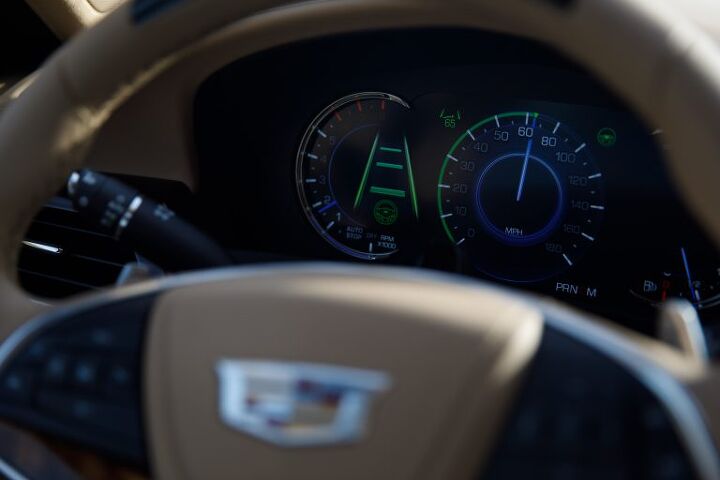
















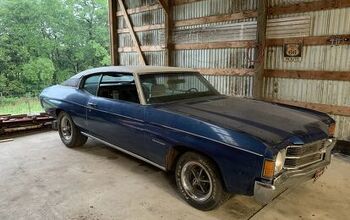

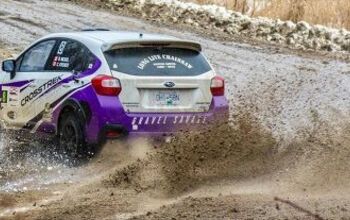
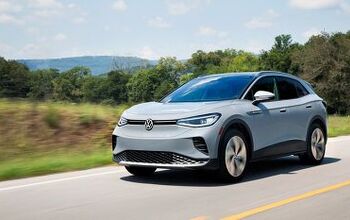
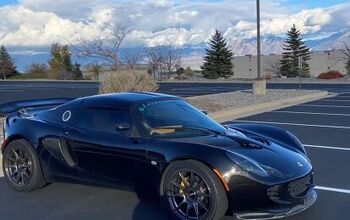
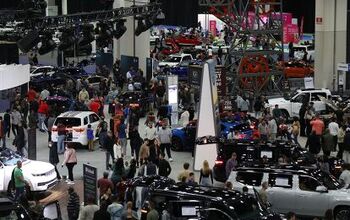


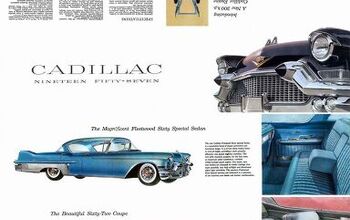

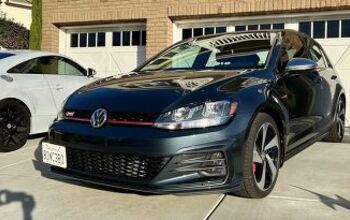
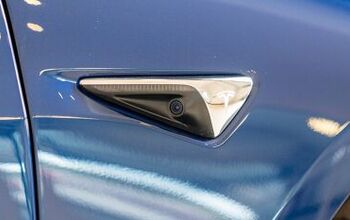

Comments
Join the conversation
Driver assist really is a mixed bag, and context is a factor as well. I have deactivated all "driver assist" features except for the radar + camera emergency braking on my 21 Toyota. I had the collision avoidance system alert me once in a complex freeway situation and it was good. I reacted to the warning fast enough so that the braking was not invoked by the system. The radar adaptive cruise control is worthless to me on the interstate because I like to pick a speed and forget about it. (as in say, xMPH visa-vis the speed limit) If I catch up to somebody, I pass them. If somebody catches up to me they pass me. With radar adaptive cruise I'm back constantly monitoring my speedometer (just like my pre cruise control days) or I'll find myself going 5 or even 10 under my set speed behind some other car in the right lane. That said my Toyota's adaptive cruise can operate down to 0 miles an hour and start up again before it times out, and when I am stuck in crawl and go congested freeway traffic, or in a 100 vehicle parade stuck behind 25mph snowplows on Vail pass, that is when I absolutely love it. Toyota needs to put steering wheel data into the system, because when I move out on radar cruise to pass a semi truck and the highway bends to the left the system picks up the semi directly ahead, and slows down. Grrrrr. I have driven about 1,000,000 miles in my life without lane assist. The curmudgeon in me says I don't need it now. In winter driving on snowy roads it misreads the tracks in the snow on the road more often than not and constantly false alarming. Blind spot monitoring and rear cross traffic alert? Good stuff. I have a friend that loves lane assist and radar cruise and he's put some investments in self driving car companies. That said, cars to him are just an appliance and I know that at times, he drives mildly intoxicated both alcohol and cannabis, so what does that tell you. ;-). So that opens the debate to the idea that does driver assist enable or encourage impaired drivers.?
Reservations mean little. They are usually used to hype a product launch. The Hummer EV had a ton of reservations, but only 1500 have been sold this year!!